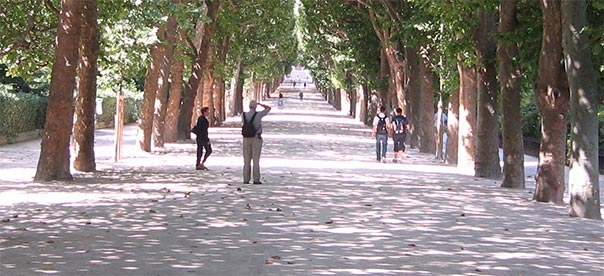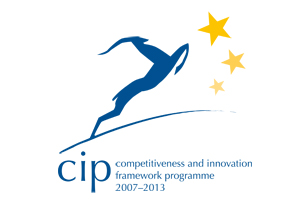 Content from the Austria Report
Content from the Austria Report
CONTENT FROM THE DRAFT TRIANGLE REPORT - STAKEHOLDER CHAPTER
Key sustainable tourism stakeholders are found at national, state and regional level. Tourism developments, especially in regard to sustainability are mainly situated at regional level. Below the most relevant and central stakeholders for sustainable tourism are briefly summarized.
 1.1.1.1 Governmental and semi-governmental bodies
1.1.1.1 Governmental and semi-governmental bodies
|
(E.g. National governments, ministries, subsidiary agencies, committees, boards) At the center of governmental stakeholders sits the Federal Ministry of Agriculture, Regions and Tourism (BMLRT). The ÖHT (Austrian Bank for Tourism Development) supports sustainable tourism through a variety of financial and funding support for the tourism industry. Statistics Austria (Statistik Austria) collects statistics on tourism and includes sustainability indicators. Figure xy (??) shows the further organizational structure, stakeholders on the national level are presented with a red frame. |
1.1.1.1 Tourism Associations
|
Tourism associations in Austria exist at national, state and regional level. These associations include the Austrian National Tourist Office (Österreich Webung) at national level along with nine state level tourism associations (see Annex 2). State level institutions are very relevant stakeholders who often develop cooperations with relevant institutions in the mobility sector for example (e.g. Tirol Werbung working with the Austrian National Rail (ÖBB) to develop improved public transportation connections). However, it is local and regional associations who are the strongest driving forces in sustainable tourism, as the responsibility for implementation of sustainable strategies lies with them. Aside from regional associations there are two noteworthy representative associations: the Austrian Hotelier Association (Österreichische Hoteliervereinigung - ÖHV) which represents hotels, resorts and their employees; and the Austrian Travel Association (Österreichischer Reiseverband - ÖRV) which represents predominantly travel agencies and tour operators. |
1.1.1.2 NGOs, Sustainable Tourism Networks and Partnerships
|
(E.g. Nature conservation and environmental organisations, development or church-related organisations, sustainable tourism networks, etc. ) The most well-known stakeholders amongst the NGOs in Austria are the Austrian Alpine Association (Österreichischer Alpenverein) and Nature Friends (Naturfreunde) with corresponding national and state level chapters throughout the country. Lesser known, but also active is the Austrian Tourism Club (Österreichischer Tourismusklub, ÖTK). All three of these organizations work closely with their members to ensure safe alpine and outdoor activities while also including elements of nature conservation. In addition to these, the NGOs Verkehrsklub Österreich (VCÖ) and Radobby Österreich represent concerns and interest of sustainable mobility. The Radlobby even has a specific cycling tourism segment. The networks Alpine Pearls and Bergsteigerdörfer have both dedicated themselves to topics of sustainable mobility and focus on car-free travel and activities. While both feature destinations predominantly in Austria, the networks also include some destinations from neighbouring countries. The hotel networks Naturidyll and Bio hotels are networks that go beyond a certification, as they are dedicated to a level of connection amongst themselves to ensure knowledge transfer between them. Thus ensuring sustainability is upheld throughout the network. The Wanderdörfer network focusses on hiking in destinations which seek to maintain ecological and social integrity while simultaneously upholding a typical local character of the destination. Here too, exchange and learning from each other is a characteristic of the network. Various partnerships further shape the Austrian sustainable tourism stakeholder landscape and play a vital role in sustainable tourism. One such partnership is Genussregionen which partners local agricultural production with gastronomy and hotels to provide guests high quality culinary experiences which reflect local traditions and culture, thus providing increased sustainability in the product chain. Also common are partnerships between national parks and the surrounding communities for improved destination management and marketing. Examples of such partnerships include National Park Kalkalpen or Steyr Naitonal Park Region. |
1.1.1.3 Relevant research and educational bodies
|
(Research and/or educational bodies in your country explicitly dealing with sustainable tourism issues) Research on certification and sustainable tourism development has mainly been covered by the MODUL University, Vienna and by the University of natural resources and life sciences (BOKU), Vienna. BOKU developed specific guidelines for cable car enterprises and the management of ski resorts based on EMAS (Pröbstl et al 2004, Pröbstl-Haider et al. 2017). Further research focused on the motivation of hotels to get certified, the different content of labels, the motivation for shifting from one label to another and the environmental effects achieved by certified hotels over time (Müller 2011, Müller and Pröbstl 2012, Reschl 2019). A regular update of EMAS registered tourism facilities, related information and support is also provided by the Austrian Environmental Agency (Umweltbundesamt, DI Monika Brom, Stv. |
1.1.1.4 Individual tourism business and destinations of particular relevance
|
→ Please select exemplarily some respective “lighthouse Businesses/Destinations” of particular relevance for their sustainability efforts and shortly present them. The Austrian tourism presents and highlights several regions and destination in the context of sustainable tourism development (see https://press.austria.info/uk/latest-news/2020/sustainable-tourism-in-austria-it-comes-naturally/): Alpbachtal – a local planning bylaw from 1953 makes Alpbachtal’s traditional wooden architectural style mandatory for all new buildings, preserving both its heritage and alpine look. This has even led to Alpbachtal being voted ‘Austria’s most beautiful village’. There are also some 105 working farms in the Alpbach valley, about the same number as 100 years ago – a true ‘living history’ in these parts. (www.alpbachtal.at) Gmünd – this once medieval centre in the province of Carinthia is now a unique artistic hub and a fine example of a small town revitalised, assuming renewed identity and cultural relevance. To date, Gmünd, has refurbished some 15 buildings that had long stood empty and now host a collection of galleries, workshops, art studios and special exhibition spaces. Nicknamed ‘the artists’ town of Gmünd’, it is a testament to Austria’s dedication to a continuing, self-nurturing arts culture appreciated by locals and tourists alike. (www.künstlerstadt-gmünd.at) Graz – Austria’s second largest city, is a real hotspot for all things culinary, including a number of festivals celebrating its gastronomy, a definite ‘to-do’ is a visit to one Graz’s many farmers markets that dot the city. 350 farmers from the immediate vicinity guarantee fresh, organic products with very little mileage attached.( www.graztourismus.at). Hohe Tauern National Park – The largest protected area in the Alpswhich is spanning some 1856 km2 of untouched nature across the three provinces of Salzburger Land, Tirol and Carinthia. The numbers are impressive - 266 peaks over 3,000m, 551 lakes, 279 streams and rivers, and 250 glaciers. A third of all plant species native to Austria grow here (www.hohetauern.at). Innsbruck – the capital of the Tirol is popular for its enviable location which offers the draw of a pedestrian-friendly city with plenty of character lying in close proximity to incredible mountain recreation. There are over 140 drinking fountains around Innsbruck? Many are real eye-catchers and could be considered art installations in their own right; at least one dates back to 1806. All water is fresh, crystal-clear mountain spring water, rich in minerals, and originating directly from the nearby Karwendel Nature Reserve. No need for plastic throwaway containers here. Simply reuse, refill and recharge with a taste of Innsbruck. (www.innsbruck.info) Kitzbühel – internationally-recognised and synonymous with world-class ski, Kitzbühel has a healthy respect for what makes it such an all-season recreational draw for visitors. Care for its environs has led to its commitment to the ‘We Respect Nature’ project whereby visible, orange signage denotes areas that are off limits to people whether on a summer hike or exploring off piste in winter. This ensures that local wildlife is not disturbed or displaced and their habitat is protected and untouched (www.kitzbuehel.com). St. Johann in Salzburg – this town has long prioritised the conservation of resources and the use of renewable energy. In 2008 it received the highest honour of the e5 program – a Europe-wide qualification and award programme for municipalities. A free ski bus runs in winter and e-bike rental in the warmer months are just some of the eco-friendly possibilities here (www.josalzburg.com). Other publications highlight engagement in the context of the sustainable development goals, which are in line with sustainable tourism development, which are a special national goal by the Ministry of Agriculture, Tourism and regions (https://info.bmlrt.gv.at/themen/tourismus/tourismus-und-die-sdgs.html). The initiative addresses different target groups from the hotel manager, the entrepreneur but also includes student studies The database on tourism related certificates based on EMAS showed that only a few enterprises use this certification in Austria (see figure xy in chapter 4.1.4.1). One ski resorts on Austria uses the certification and auditing following EMAS and ISO 14001. In this context the resort in Lech am Arlberg (ISO 14001) and the Schmitten Höhebahn in Zell am See (EMAS and ISO 14001) are good examples and front runners within the branch. The Hotel Retter in styria is a pioneer when it comes to climate neutrality in the accommodation sector. Energy efficiency is of high importance for building measures as well as for heating, cooling and also mobility. Agricultural production is part of the hotel, with fruit orchards surrounding the buildings that are eco-certified since 1992 and an eco-certified gastronomy since 2004. The extraordinary effort for sustainability and quality of service had the result of 263 points in an audit of the Green Globe, when 61 points were required for the Austrian eco-label (exceeding the requirements with 267%) (Hotel Retter 2021). The Boutiquehotel Stadthalle in Vienna also shows extraordinary effort targeting a sustainable offer. Guests (?) who arrive via bike, train or e-car get a 10% discount on the price of their room for example. The building itself is the first zero-energy balance hotel in Europe. The offer further consists of an organic breakfast and a lavender roof garden. The hotel is also available for hosting “Green Meetings” (Boutiquehotel Stadthalle 2021). The Castle Thannegg is an Eco-hotel in Styria with special interest in energy efficiency, alternative energy sources and research on effects of environmentally friendly action on family hotels. As the first hotel in the world, Castle Thannegg counts the CO2 emissions of guests arriving into their own CO2 footprint (Schlosshotel Thannegg n.d.). Another business worth mentioning is “der daberer“ which is a biological certified hotel since 1978 (Biohotel Daberer GmbH n.d.) as well as the Naturhotel Waldklause which was built in an innovative glue-free solid wood construction and Tyrolean sheep wool insulation (Naturhotel Waldklause n.d.). Also the hotel Heffterhof in Salzburg (City) is a great example for sustainable accommodation and hosting green meetings and events, certified with the EcoLabel (Hotel Heffterhof 2021). On a regional scale several online platforms offer information and lists for sustainable and Eco-certified accommodation and gastronomy in the respective area (see for example Bio Urlaub Steiermark, Ramsauer Bioniere, Bioparadies Salzburgerland etc.). Others, like Slowfood Kärnten (Carinthia) focus on the sustainable production of food. Werfenweng (Salzburg) offers sustainable tourism with a special focus on soft/sustainable mobility and some provinces, like Lower Austria or Carinthia, offer special information and deals for vacations by bike and larger bike tours. |
























































